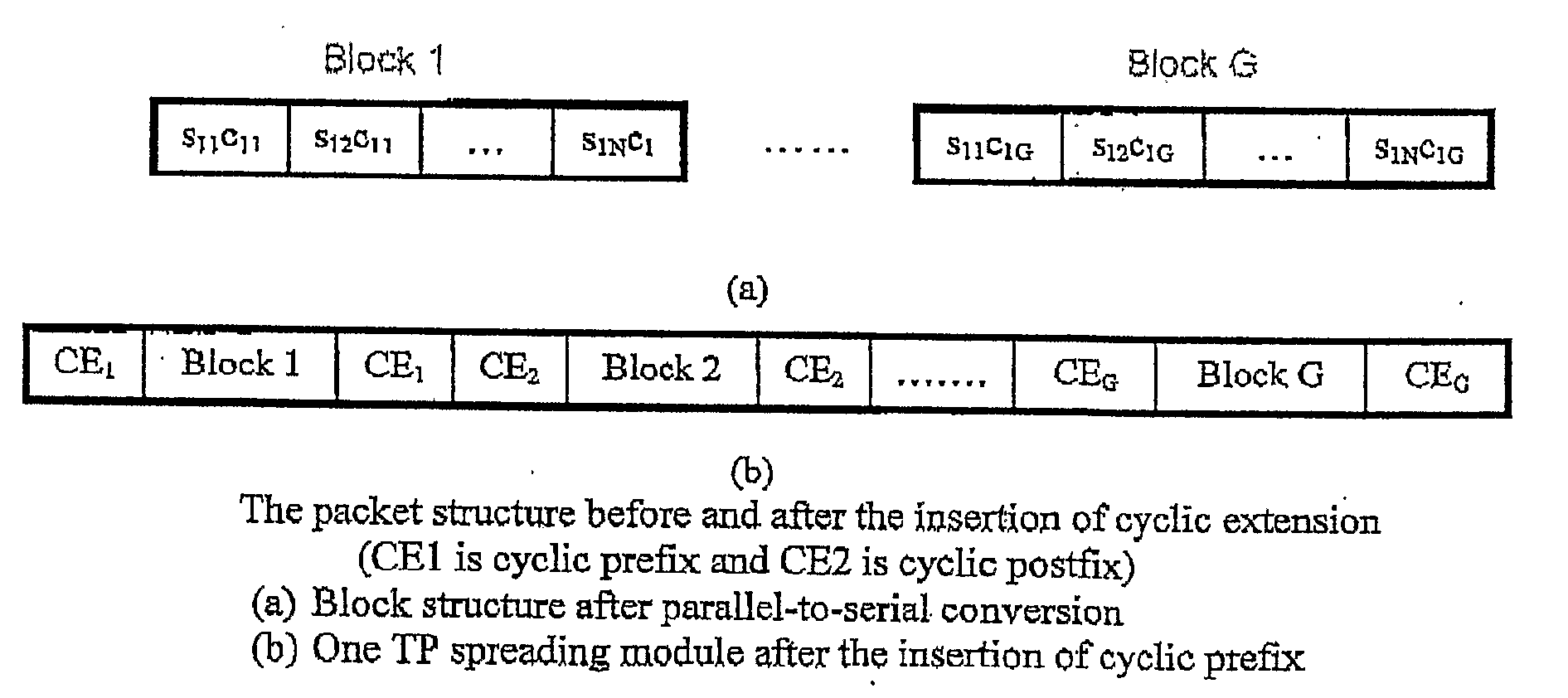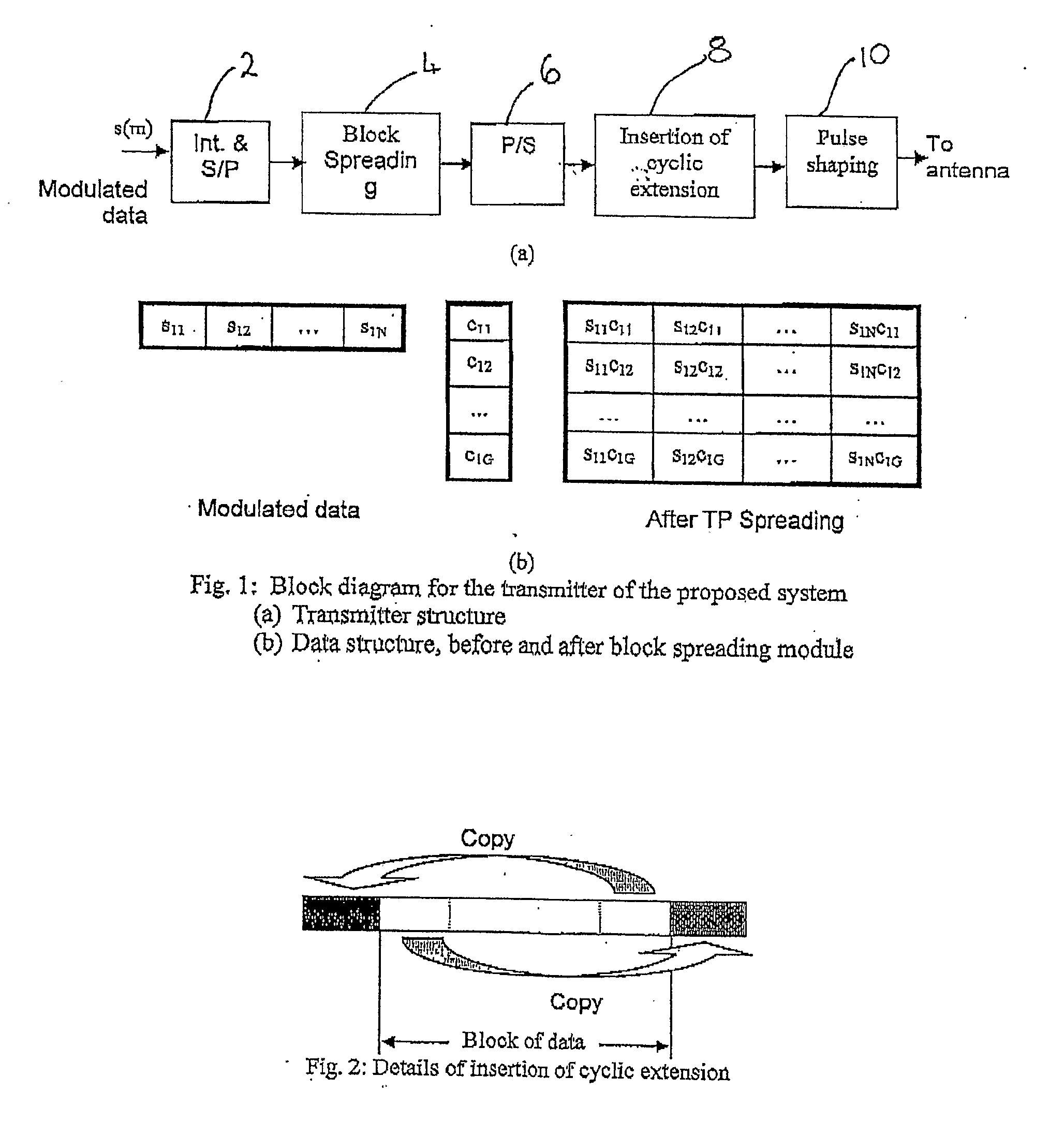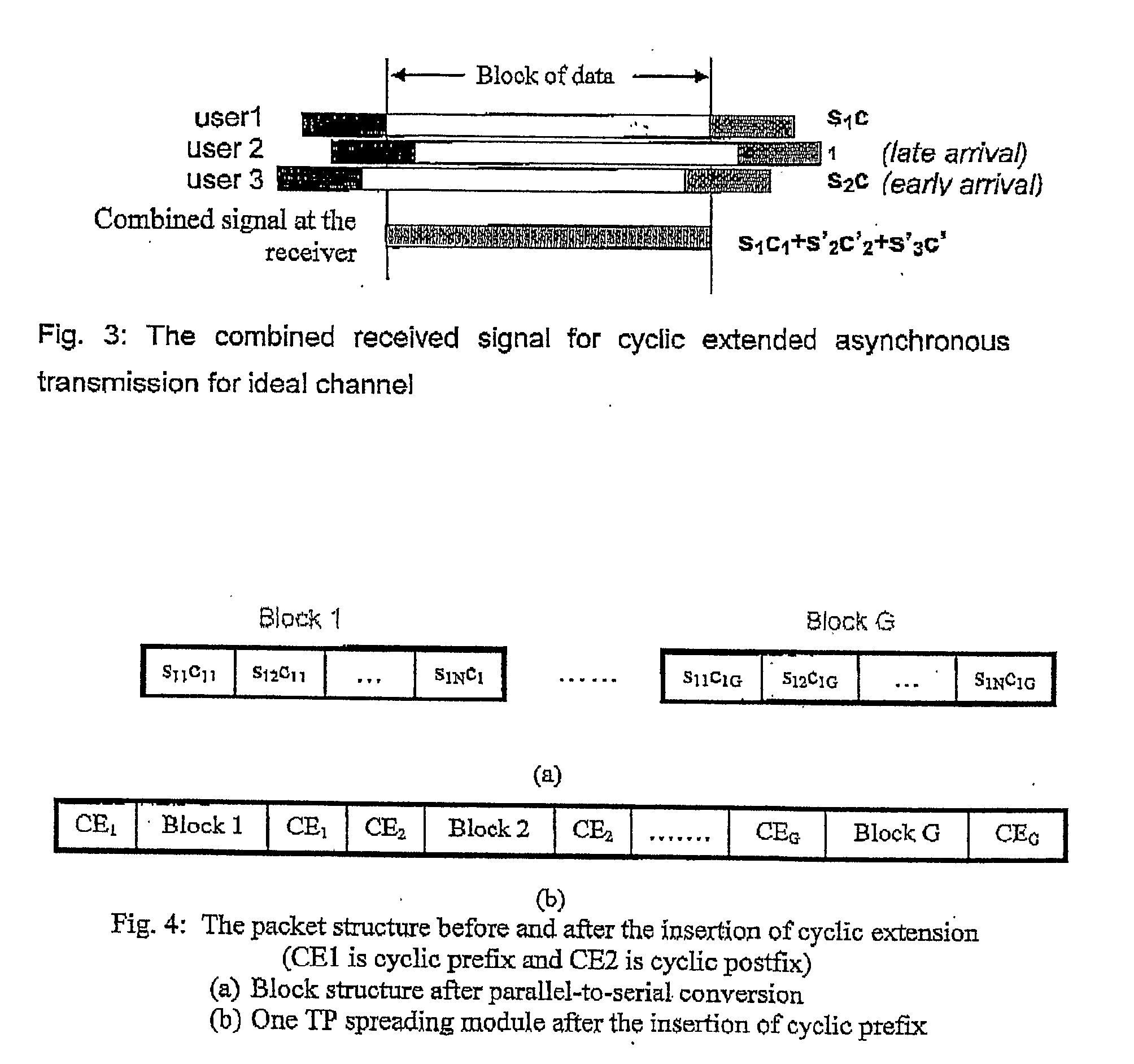Method and Transmitter, Receiver and Transceiver Systems for Ultra Widebrand Communication
a technology of transmitter and receiver, applied in the field of cyclically extended cdma systems, can solve the problems of slow convergence time and complicated computation, inability to effectively suppress ifi and mai, and limit the system capacity and maximum data rate that can be supported for available bandwidth, so as to reduce the computational load and/or power consumption of the system, and achieve the effect of reducing system performance and/or power consumption
- Summary
- Abstract
- Description
- Claims
- Application Information
AI Technical Summary
Benefits of technology
Problems solved by technology
Method used
Image
Examples
first embodiment
[0065]FIG. 1a shows the transmitter structure and FIG. 1b shows the packet structure of data being transmitted according to the present invention. As shown in these figures, the modulated data symbols s(m) from a first user are firstly converted from a serial sequence into a parallel sequence in a serial-to-parallel converter 2. An interleaver (indicated as Int. in the figure) is optionally added before the serial-to-parallel conversion to interleave signals from other users with the signal of the first user. The parallel sequence is then passed to a block spreader 4 and block spreading is applied to the sequence. The spread signal is then passed through a parallel-to-serial converter 6. A cyclic extension is then inserted into each block in the serial sequence in a cyclic extension insertion module 8. The cyclically extended signal is then subjected to pulse shaping in a pulse shaper block 10 and, after RF conversion, the signal is transmitted through a wireless channel.
[0066]As sh...
second embodiment
[0081]FIG. 7 shows a block diagram for a transmitter structure according to the present invention. The transmitter comprises a cyclic extension insertion module 30 for receiving the modulated data symbols s(m) from a first user. The output, in parallel form, is fed to a block spreading module 32, and the output signal of the block spreader module 32 is converted from a parallel sequence into a serial sequence in a parallel-to-serial converter 34. The serial sequence is then passed to a pulse-shaping filter 36 before transmission. In a preferred embodiment, an interleaver (not shown) may optionally be added before the cyclic insertion module to interleave signals from other users with the signal of the first user.
[0082]FIG. 7 also shows the packet structure of data being transmitted according to the second embodiment of the present invention. As described above in respect of FIG. 1b, the vector s1 (=s11, s12, . . . , s1N) denotes the modulated data symbols and c1 (=c11, c12, . . . , ...
PUM
 Login to View More
Login to View More Abstract
Description
Claims
Application Information
 Login to View More
Login to View More - R&D
- Intellectual Property
- Life Sciences
- Materials
- Tech Scout
- Unparalleled Data Quality
- Higher Quality Content
- 60% Fewer Hallucinations
Browse by: Latest US Patents, China's latest patents, Technical Efficacy Thesaurus, Application Domain, Technology Topic, Popular Technical Reports.
© 2025 PatSnap. All rights reserved.Legal|Privacy policy|Modern Slavery Act Transparency Statement|Sitemap|About US| Contact US: help@patsnap.com



